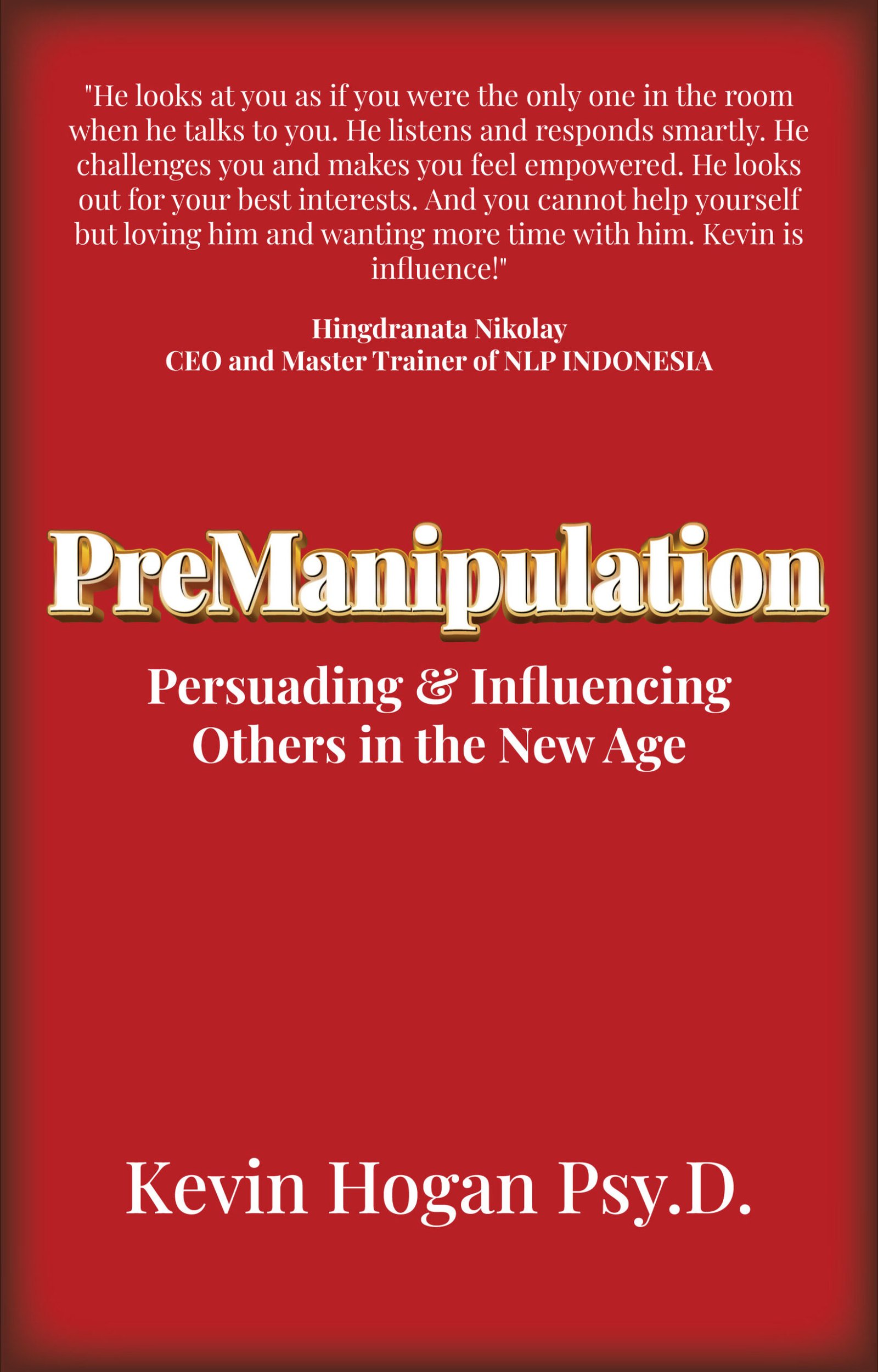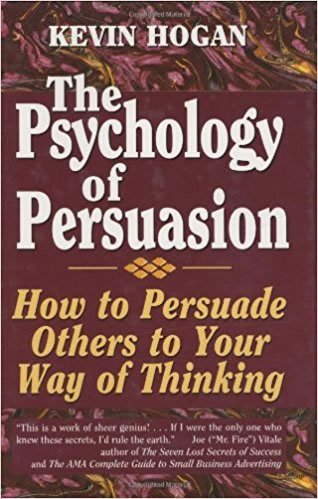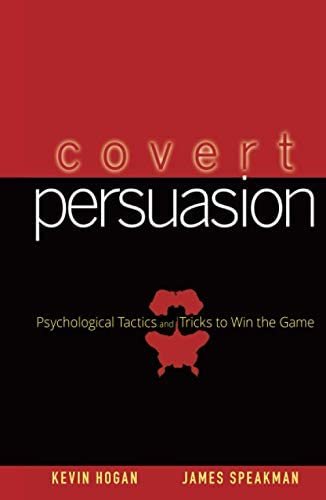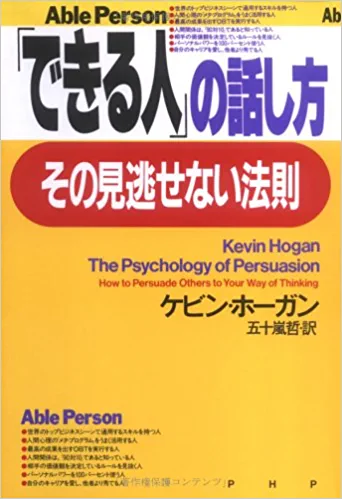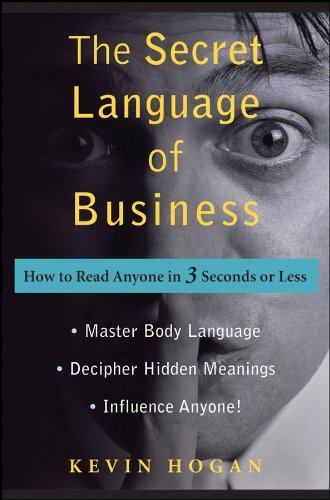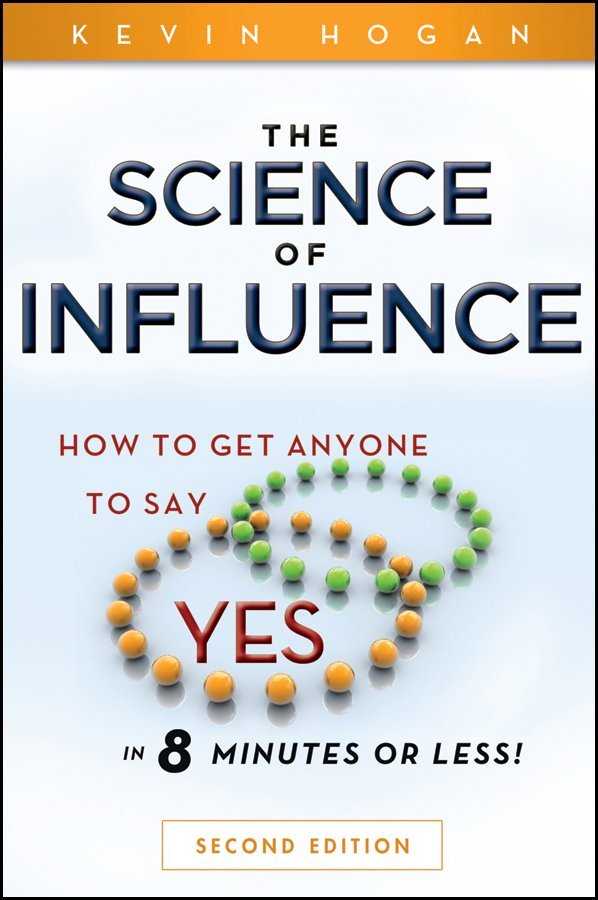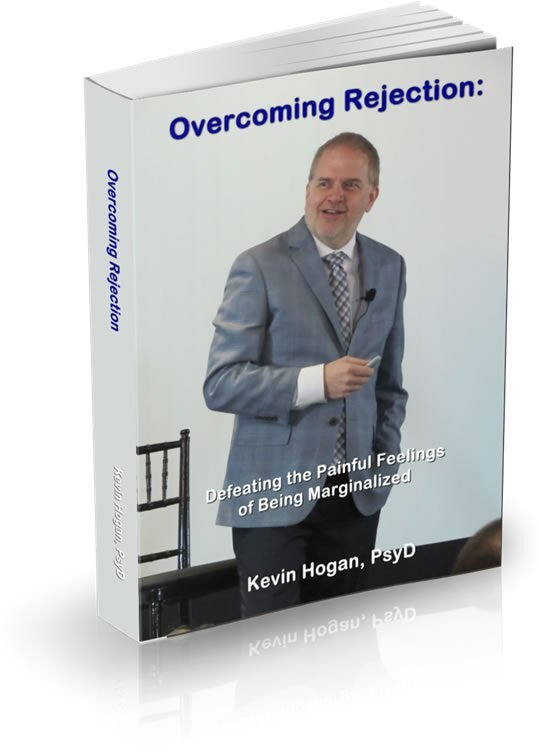 Even people who “think logically” filter their ideas, values, and beliefs through emotions. It’s very difficult to persuade anyone about anything without addressing the Emotional Filter.
Even people who “think logically” filter their ideas, values, and beliefs through emotions. It’s very difficult to persuade anyone about anything without addressing the Emotional Filter.
Last week, you learned about a dozen strategies and tactics of persuasion that you were previously unaware of. (That is a good week!)
This week, I want to show you several more techniques and strategies you can use to cause people to comply with pretty much anything you want.
And yes, I am laying out this much for you to give you a foretaste of The Persuasion Protocol CD Program that will be released next week.
Last week, you got a taste of several specific strategies to make more money in sales, direct mail pieces and marketing.
This week, let’s get everyone else to say, “yes,” to you.
Beating Them to the Punch
People, in general, have an unnecessary illusion that they must be defect-free in order for people to comply with their requests.
Not the case.
But…
It’s really easy to screw this up.
Example of Beating Them to the Punch
Here’s an easy example to understand that is even simpler to map over to your personal experience in pretty much any situation you find yourself in.
In Court. Attorneys can beat the opposition to the proverbial punch by revealing a piece of damning information before the other side tells the bad news to the jury. The basic problem is that a piece of semi-related background material or supporting evidence paints a particularly bad picture of the defendant. In cases like these, it takes a brave attorney and braver defendant to reveal such bad news first to the jury.
As the attorney, perhaps it would be significant to reveal, “Ladies and Gentlemen, you should know that my client isn’t the family man. In fact, my client has been married four times.”
This revelation now takes all the power out of the punch had it been thrown by the prosecution.
In one study, the strategy was tested by having a witness for the defense revealing something significantly negative about the defendant. What was being tested was whether it would matter if the damning information was revealed early or late.
It turned out the result is the same. As long as the revelation is offered prior to the prosecution, most jurors dismiss the information. And in fact, that led to a dismissal or a reduced incarceration rate for defendants whose attorney beat the prosecution to the punch.
If the attorney says, “My client has been bouncing checks for a long time, he recognizes this is wrong and, he’s going to change.” prior to the prosecution, the jury, at least based on their decision, doesn’t care.
But what if the jury is told that his client did something arguably worse than bouncing checks, like drug smuggling?
“The client will tell you that this is not the first time he has smuggled drugs.” It turns out the jury once again is unfazed by the revelation and votes in favor of the defendant.
And what if the client has done something MUCH worse than smuggling drugs or bouncing checks…like Negligent Homicide?
Specifically, “My client had two six packs and accidentally hit a pedestrian, leading to her death?”
Beating the prosecution to the punch was still successful!
Key Point #1: Self Revelation by you or your representative has potent persuasive power.
Three things will screw up Self Revelation. One you can’t control. Two blunders you can make to cause this to backfire follow…
Two things to do so this doesn’t backfire… :
Framing the Revelation
You might wonder whether framing the revelation is better than not framing the revelation. Considering the overall value of framing in persuasion, it’s a very fair question.
I’ll spare you reams of research:
Beating the prosecution to the punch without framing is more effective than revealing and then framing:
 Ex. “Oh shoot, I’ve done that in the past; I’m not going to do that in the future.”
Ex. “Oh shoot, I’ve done that in the past; I’m not going to do that in the future.”
vs.
Ex. “Oh shoot, I’ve done that in the past.” PERIOD.
Sadly there are exceptions: race matters in U.S. studies.
Blacks using this strategy changes the results…in a negative way.
How?
It tends to backfire.
Here’s an example from a different context.
It’s election season and the study wanted to see if race matters as to whether someone will vote for a guy if they read in the paper that he revealed that he did something really wrong.
Researchers put an unlabeled photo of white man next to transcription of a speech where a candidate was running for office. No one knew what the candidate looked like and everyone assumed the picture in the paper was of the man. His sin? He revealed in his speech that he was a deadbeat Dad. That means, he procreated without 18 years of payment after procreation.
The vast majority reading the article seeing the photo of the White Male voted for the deadbeat Dad.
But… when the untagged photo was a black man, there was a totally different result. In this case, the article caused most to NOT vote for deadbeat Dad.
This is important for many reasons.
First and foremost, always recognize that Persuasive Strategy happens in the real world.
Reciprocity or Contrast work in specific contexts and you have to learn which or when using even the most basic tactics of influence will backfire.
Secondly, IDENTITY plays a big part in the Persuasion Process.
Decisions can swing based on how the reader, listener, or other person sees themselves in comparison with you and also how they judge themselves in connection with you.
And it turns out in this case, Beating Them to the Punch is more effective when recipients are not slightly distracted or greatly distracted.
Key Point: Beating them to the punch is effective when it can be processed but not thoroughly.
The Big Picture is this: Opponent reveals? You lose. You reveal, you win.
And the Little Picture is that you must factor in crucial pieces like race, identity, framing and distraction.
Beliefs, attitudes and opinions can be changed but research shows it happens most efficiently in a specific situation.
Groups and In-Groups
People can be persuaded if the belief is correct to the extent it’s anchored into an in-group with similar beliefs. That means whatever the context of the proposal, I will succeed or fail to the degree I am closest to matching the beliefs of the group itself.
People will be persuaded by the person with the similar belief structure most representative of the group.
- People don’t see themselves as X (An Employee of 3M) but as a sub X (Management at 3M.)
- People don’t see themselves as X (A Salesperson) but as a sub X (A Life Insurance Salesperson)
- People don’t see themselves as X (A Woman) but as a sub X (A Working Woman with Children)
This is the vault. Here’s what is inside…
Hand me the key:
How can you tell if you have the right sub X?
Simple.
 Think: “How does the ‘Working Woman with Children view OTHER WOMEN?”
Think: “How does the ‘Working Woman with Children view OTHER WOMEN?”
She’s unimpressed, disdainful and rolls her eyes.
Answer? You have the right sub X, and you will be persuasive if what you say represents closely what most Working Women with Children would agree with.
Appeal to the sub X. People turn to In-group members to get their beliefs validated.
Women aren’t women.
Women are a contrast to the SPECIFIC GROUP women identify with.
And, of course, you and I identify with a number of SPECIFIC GROUPS.
People need to feel certain their beliefs are correct. They are constantly seeking out information that currently validates what they believe. Only evolved minds read information that conflicts with their beliefs.
The easiest person to persuade is the person who is only aware of what is in their one window on the world. The most difficult person to persuade is the person who has views North, South, East and West from their world.
I liken this to the current election year candidates.
Elections are Emotional Hotbeds
Political campaigns are emotionally charged periods of polarization.
If I say the name, “Barack Obama,” you have an opinion. You think he’s great. You think he’s insane. You think he’s well-intentioned, you think he is trying to bring the country down single-handedly. You BELIEVE something very strongly.
The vast majority of people will filter all information about Barack Obama through their emotions and beliefs and will either embrace or attack the information you would offer to persuade that person to believe differently.
Key Point: Emotions are the stronghold on persuasion.
Later in the article I’ll show you how to utilize emotions to BREAK THAT STRONGHOLD.
Meanwhile, other “names” trigger different emotional reactions.
Supporters of Dr. Ron Paul are “conservative” in money matters and some, but not all, social matters. Most are Republicans but lean strongly toward “Independent.” The entire point of Dr. Paul’s campaign is that people, for the most part, have the right to believe and do in their homes whatever they choose so long as it doesn’t harm others.
Meanwhile supporters of Mitt Romney and Newt Gingrich hold to the group party line of being more conservative than Democrats in money matters and more conservative on all social issues than Democrats.
It’s very difficult to break people free from In-Group Think.
I saw a picture in the NY Times this week that showed a protestor in a crowd of protestors with a sign that said, “Housing and Health Care ARE Human Rights.”
I burst out with a mild laugh because the implication was that the State (“gov’t”) should assure housing and health care for all citizens in the U.S. who can’t currently afford such things.
But my thought expanded to, “This guy hasn’t been to Somalia and East Africa where ‘human rights’ are thought of as not being intentionally starved and slaughtered by War Lords.” And the obvious concluding thought, “When presented with Somalia, will he give up 50% of his unemployment check, Food Stamps and other government gifts and send them to Somalia (for example) through the Red Cross so surviving Somalians, for example, have the right to eat tomorrow?” Obviously not.
[If people in the U.S. wanted to stop something as simple and cheap as starvation and War Lords in Somalia, it could be done as fast as you can blink an eye in a Seal Mission in Afghanistan.]
The protestor is not protesting on behalf of humans or human rights but as a representative of people within the borders of the United States (Americans) who choose to protest instead of work and desire housing and healthcare that is paid for by someone other than themselves while believing that is a “human right.”
That specific In-Group will stick vehemently to their beliefs and to persuade them to think differently from the outside is a Herculean Task with only one real doorway in.
They might believe they are protesting for X but in reality, of course, they protest for sub-X and that is how ALL subgroup/in-groups experience reality.
If you are trying to influence people away from a belief that is representative of their sub-X, you will be shut off.
How to get the doorway to their mind to appear:
The Doorway?
People will change their beliefs to the extent they agree with the In-Group.
 They think: “This music helps me study better.”
They think: “This music helps me study better.”
They find out they are wrong.
They will accept change IF the information has come from WITHIN the In-Group.
Alternative?
There is one:
If you identify with the individual as both being part of a DIFFERENT in-group (a different Sub-X) and that identity is greater in “importance” than their first sub-X that they processed information through.
People typically change their beliefs because they desire identification or affiliation with other in-group members.
In-Group members far more easily influenced and are influenced by other In-Group members when compared to outsiders.
Key Point: When you are The Persuader, don’t invalidate their belief/attitudes/opinions.
Only offer additional options to consider without violating their identification with the first subgroup.
And then be certain that the person you choose to influence can identify with you as a member of ANOTHER/DIFFERENT sub-x (in-group) that is sometimes or typically more important to their IDENTITY as the first sub-x.
The Persuasion Protocol
The reason Beating People to the Punch is so powerful is that people are already thinking, “Ah, that woman is trying to get me to switch my vote,” so when she says, “The reason I’m here is to get you to switch your vote,” resistance is all but eliminated and the hallway to the door is accessible.
Causing people to be persuaded requires a Protocol. On things of importance, you can’t simply say, “Oh, use Reciprocity.”
You must have a protocol to see the wider context first then to hone in on where beliefs and attitudes are and determine what sub-X or in-groups are at work.
Then you construct your basic message within that context and THEN you must use the emotions of the moment to generate a changed mind.
Utilizing Emotions in Persuasion
Here’s an example of such Emotional Utilization from research done by Dariusz Dolinski, the great Polish persuasion researcher.
 Car drivers are already parked in No Parking zones. (That’s pretty much all there is in Warsaw.)
Car drivers are already parked in No Parking zones. (That’s pretty much all there is in Warsaw.)
There 3 conditions in the experiment.
Part of the goal of the experiment is to change emotional states and THEN ask a question hoping for compliance on the part of the person parked in the No Parking zone.
Tickets are written by police officers in Poland and it is easy to identify them as you return to your car. They are an instantly identifiable thing no one wants to get. In Poland, a ticket is put under the windshield washer. Some of the people returning to their car tonight will see something under their windshield.
In the first condition of the experiment, it’s not going to be a ticket. It’s going to look like a ticket…but it’s really one of two other things.
* A promo for hair growth stimulating shampoo
or
* A promo requesting a donation of blood.
In the SECOND CONDITION, one of the two leaflets is taped to the car’s door. As in most countries, police officers don’t tape tickets to the door of automobiles.
In the control condition, there are No parking tickets (Leaflets) to be seen.
In each condition, someone knocks on the window, after the driver has looked at the leaflet. “Hey, I’m working on my Masters Thesis, I’m hoping you will fill out a survey on traffic optimization here.”
In the first condition, the driver saw what they thought was a traffic ticket. They thought they were screwed and were angry. But they were wrong!
If what was really under the windshield washer blade was the shampoo leaflet, 55% helped the student and answered the questions for the student.
If the leaflet was a leaflet asking for a blood donation? The person thought they were screwed and then realized NO! They aren’t, it’s a request for a blood donation. In this case, 68% helped student. (They don’t have a parking ticket and can now forget about the blood donation by helping the student!)
In either case, over half of the people who thought they had a Parking Ticket (anger, fear, etc.) then were persuaded by a leaflet (irritated) then were asked to answer a few questions to help a student out (less irritating) complied.
What about other scenarios – does it still work?
But what happened when the person didn’t even consider it being a Parking Ticket? In this case, something was TAPED to their car door or windshield.
 They didn’t know it was the student who taped the leaflet to the door. The person is LESS angry and less irritated, although they still experience those emotions, simply less.
They didn’t know it was the student who taped the leaflet to the door. The person is LESS angry and less irritated, although they still experience those emotions, simply less.
In this case the student asks for help after the driver reads their leaflet (or scans it and tosses it).
30% agreed to help if the leaflet was for hair growth stimulating shampoo.
40% agreed to help if the leaflet was requesting a blood donation.
34% agreed if nothing was taped to the car. (The control condition)
Less of an emotional rollercoaster yielded a LOT LESS compliance.
Later Dolinski went back and had real police tickets.
What happened when it wasn’t a leaflet, but it was an actual police ticket under the windshield wiper blade?
ZERO helped.
Drivers who experienced the emotional rollercoaster tended to help. Those who didn’t get the relief didn’t comply. They just said, “no.”
Meanwhile, back in the U.S., an experiment is being done.
FEAR then Relief
College Students are recruited to do a measurements of skills and abilities test (not true) which they will offer to high school students.
All students are told, “You will receive a punishment and learning task with a mild electric shock used as motivation to learn more quickly.”
Group One sat in a class room to wait to begin.
Group Two waited, but then was told, “We are postponing the shock study. We are going to throw darts instead.”
Group Three was in another separate class room throwing darts.
A Female student now gives a pitch.
“Would you like to join a charity auction for an orphanage, donate your time….”
Group 1 (waiting to take part in the shock experiment) – 37.5% complied. 0.6 hours per student were donated on average. (0 -4 hours were asked for)
Group 2 (relieved from the fear of the shock experiment) 75% complied. (fear to relief) 1.15 hours on average were donated to the female’s pitch.
Group 3 (simply waited in a class room) 52% complied and an average of 1 hour of time was donated by the students.
Lesson?
FEAR THEN RELIEF = COMPLIANCE
You’ve now seen Fear then Relief yielding compliance in two very different conditions in two very different countries.
There’s something to this emotional stuff…
What about….
Happiness then Disappointment
Back in Poland, Dolinski does another experiment.
Two conditions.
This time men on a sidewalk observe what appears to be a 50 zloty note (like a 10 dollar bill, but it’s really a leaflet) on the ground.
Other men see a different piece of paper that is clearly a leaflet.
A young woman (confederate) asks, “Can you watch my luggage? I can’t carry my luggage because it’s too heavy while I go upstairs. It’s super important.”
Twice as many men were willing to watch in the happiness then disappointment condition!
Meanwhile back in the U.S.A., a similar experiment was being played out.
One of six simple conditions happens over time.
 A student is told, “You got an A on the test………..oops not an a but a C.”
A student is told, “You got an A on the test………..oops not an a but a C.”
Another group of students over time were told, “You got a C on the test…oops…not a C but an A.”
A control group was told, “You got a C.”
NOW another student asks for volunteer hours for a slumber party, 3 months from now. 1 – 8 hours is requested. 1 hour minimum is required but you can donate up to 8 hours.
What happened?
(C) Disappointment THEN (A) Happy subjects donated an average of 3.06 hours.
Those (A) Happy then (C) Disappointed donated an average of 2.06 hours.
The control group that got the grade C? They donated 1.60 hours on average.
A control group that was awarded the grade they actually earned when that grade was an “A” donated 1.13 hours on average.
Those given no grade donated 1.20 hours per person.
Once again, if someone is getting off the emotional rollercoaster, they will fulfill a request more often and in greater magnitude. They comply to a much greater degree.
Those with just a positive experience or no EXPERIENCE then asked for compliance = NO GOOD RESULT.
Of everything you learn in The Persuasion Protocol this is probably the easiest to apply every day in every situation you experience where you need to persuade others. There are more effective tactics, but this one is the simplest to generate.
Before you open your mouth and utter one word…. Before your body language hits their nonconscious….
“Imagine…in Every Interaction in the Real World or Online, How Would Your Life Be Different If People Were Desperate to Instantly Say ‘Yes’ to You?”
Automatic Compliance is the stuff of science fiction. It simply sounds too good (too scary) to be true…
It seems instantly unreasonable that you could have the same (more precisely: similar) effect on that person… over there… as say, Angelina Jolie, Brad Pitt, or Kim Kardashian would.
Humans are neurobiologically wired to react INSTANTLY to TWO specific Flash Perceptions when they see anyone.
- Instant In-Group Recognition: Triggering, “All is Safe and Secure, Allow Entrance, Interactions Are to My Benefit.”
- Attractiveness: (which triggers one of these) “I want them. I want to be seen with them. I want to be seen and liked by them. I want to be near them. I want them to want to be near me.”
IF you don’t generate that instant flash, reactance and resistance occur and the most likely response is always. “No.”
Until TODAY, literally, no one has ever released a program, a book, a manual, a video…no one has shown you anything ever that, “generates the Automatic First Reaction of Certainty, which yields, “yes, come in, I am comfortable with you, I feel like I’ve known you forever and I’m open to pretty much anything.”
Why?
Because until the last decade there were 100 pieces of research about attractiveness and liking compared to every 1 piece of research on generating instant calm, security, comfort and connection.
In the last few years this has begun to change because of major technological advances in neurobiology and nonconscious and subliminal stimulation. Yet nothing shows the individual, the salesperson, sales letter writer, the marketer, even the PUA how to assemble The Five Elements into one workable easy to use method…The Persuasion Protocol.
The two nonconscious neural responses are DIFFERENT from each other. They accomplish the same crucial result. They open the door to agreement and compliance. The benefit of their certainty reaction is that it doesn’t operate if there is reactance or resistance. The negative reactant response is far and away the most common, and only attractiveness counters it in a fashion similar to that of certainty.
You’ll learn how that happens and how to make it real in the program.
Get Persuasion Protocol
For the first time ever, you are on the same playing field as the wickedly good looking guy or gal who gets the majority of the sales.
That was my goal in creating this program for you.
It has been accomplished….

The Persuasion Protocol
The Fifth Element
You’ve waited over one year for this and it has just arrived. You’ll understand the delay when you listen to the program. You’ll notice my voice “changes” within individual CD’s because I had a serious vocal cord problem and had to re-record many tracks so you wouldn’t think I was the bass singer in some musical group. I was only supposed to record short clips daily but that didn’t quite happen.
The Persuasion Protocol takes you through an elegant step-by-step method of gaining compliance from almost anyone you could ever imagine wanting to say “yes” to you. It’s unlike anything you’ve ever seen or experienced before.
Unlike any program ever developed in the field of influence and persuasion or selling, you will begin by making your Self almost impossible to say “no” to…you.
Persuasion begins before you walk in the door.
The actual process of persuasion begins long before you meet the girl or have an appointment with the buyer. Persuading those who come to your website begins before they arrive at your website.
“Are you talking about preparing for the sale? I know about that…”
….uh….no…that was 1997.
“Are you talking about making yourself look as attractive as you can?”
…again…no…no…no…The Persuasion Protocol transcends attractiveness.
But don’t get me wrong. If you look like Angelina or Brad….you will have a double advantage. If you are like anyone else, you simply have the only single advantage you would ever need or want.
The First Element
I’ve spent the last 17 months scouring crucial neuroscience research, poring through consumer, marketing and behavioral findings so that you can have a complete “package” that people instantly say “yes” to *before* that first impression.
Understand…while your mastery of body language and nonverbal communication are important, it is secondary and not as important by comparison to your preparing THEIR BRAIN to instantly opt to comply with you upon first sight and communication.
…sounds like magic to me…but I promise it’s not.
It’s also *not* instantly easy and “fast.” It IS something you can accomplish. It is something you MUST accomplish.
Get Persuasion Protocol
I’ll spare you the scientific jargon and say it this way:
People have prior experience with thousands of people. They have interactions with people who they live(d) with whom they have spent a great deal of time. Those experiences each are very different and when presented with a similar moment in time, the parts of the brain that reacted to similar situations in the past arise instantly in the present ready to solve the problems and fight the fights of the past.
And that is the problem.
Before people see you, your website, or even know you exist, they are 100% prepared for who you are *not* going to be after you have completed this program.
I’ve developed a very simple process that requires 19 days to complete. It will permanently change how people will react and respond to you in the situations they would have said, “no” in the past.
The problem you face is that people paint a picture of you as if you are a mirror reflection of their past experience.
Upon meeting you or arriving at your website, it is Mission Critical to have that reflection CHANGED to a picture of a gestalt of those they have complied with in the past.
This seemingly Herculean task, assuming they are undistracted, must take place in approximately one second.
The first two discs of this program cover quite a bit of persuasive territory. The first core experience is for you to intentionally create a few micro-tweaks in how you will trigger reactions in other people on sight and then later in conversation or in text.
Would people instantly react differently to you if they saw you as Brad Pitt, Lucy Pinder, Angelina Jolie, Kat Dennings, Jessica Alba?
It’s a different set of highways in the brain, but for the purpose of this moment, go with that.
Their brain is simply wired “this way.”
How?
They would be mentally prepared to comply or agree to pretty much anything you ask them.
Problem?
Yes.
I can’t make you look like Brad….I can’t make ME look like Brad…
Doesn’t matter.
There is another way…
This initial trigger is crucial or they will react to you in such a way that is similar to:
a) how you have triggered people in the past
b) how they have perceived people, now gestalted into “you,” in similar situations in the past…even if they’ve never met you, heard you speak, been to your website or had a clue you were alive.
I will show you *precisely* how to take the video recording of your life and change the few crucial pieces where other people were triggered to say “no” to you in such a way that those experiences are no longer reflected in your personality, persona, your face or even your body language. As you guessed, this has nothing to do with making changes in body language. This is changing a few tiny little pieces of you that trigger mirror neurons to react in others.
This is not a bogus NLP “technique” that never got tested. This shifting mechanism was trial and errored until the right solution was discovered in testing. In other words, this is real.
Where you currently have success in influencing others, you make no changes. In these situations your current beliefs, certainties and behaviors are already effective.
Where you haven’t been ideally successful with persuasion, you will excise a few pieces of your life video recording so that you send a custom designed message with greater likelihood for others to say “yes,” to you. Isolating the specific points to shift is not difficult and the process is fairly simple.
Warning: This is not like Instant Coffee. It takes effort. But, once the change is made, it’s permanent.
The result is that you’ll see most people and their likely response to you through a lens of high certainty and reduce internal triggers to move away from you to almost nil.
You now begin to shape all people who you come across in the way you choose instead of default, which is indeed a fault.
The Second Element
The Protocol for effective and rapid persuasion flows fluidly, easily and obviously to the Second Element.
Here you learn to control the time constructs each person has as it relates to their being persuaded by you. You must choose precisely when you are going to approach, meet, ask for the date or have people arrive at your website. The arrival time is crucial and you can pre-determine whether you are virtually certain to gain compliance or not quite easily BEFORE you enter their space.
The Second Element is not limited to “what time is it,” but “what day is it,” “what date is it,” “what month is it,” and how you account for the differences in how they will react to you on each of those specific days, hours, weeks and months. Once you learn to utilize this one very easy to grasp tool, you will never be seen quite the same.
Their reaction to you and their compliance or not, is much more than about your “first impression” or your what you say. It’s about a very specific individual with a specific mindset interacting with you at an absolutely optimum time.
I’ve left nothing to chance here. I’ve put the factors of the Second Element together into a template and laid it out for you for an hourly, daily, weekly and even monthly schedule of how to optimize all of your interactions with brilliant timing intention.
Get Persuasion Protocol
It’s here that you’ll be introduced to the unknown factor that stops persuasion cold and discover how to completely bypass it!
I’ve only shown three corporations how to do this. I’ve never trained it in Boot Camp. No one else has put this into interactions, sales, marketing…no one. This is brand new for you.
The Third Element
It is no coincidence that most of the successful online marketers have strong backgrounds in two specific and, frankly, not easy to master hypnosis models. Drawing from even simple but powerful hypnotic techniques has allowed marketers to target states of mind or subroutines within individuals to increase sales.
But before you can use these techniques, you have to learn how to cause someone to be in a specific state of mind. Random doesn’t work beyond random. Feeble attempts typically fail. Now you learn what…and how.
Different “sub-selves” (the actual neurobiological term) are activated in different environments and in the presence of different people. This is why it is CRITICAL to make instant shifts in environment, location, people and triggers in the environment a key factor in The Third Element of The Persuasion Protocol.
Equally as important is you being aware of how you are perceived at any moment of an interaction.

Running Their Brain and Shifting Their Selves
You can predict behavior when you recognize “the state,” the part, that is forward in their brain.
If your prediction is that compliance will fail, you CHANGE what part of them is forward until you can gain compliance.
The first state or part will likely be forward until the Passive Goal Guidance System has met a tiny goal and switches out. Now you learn how to optimize the use of anyone’s PGGS for Rapid Compliance.
The Fourth Element
Without question, the great marketing and sales discoveries of the last decade are those that give you applications to synchronize identities with another individual. This can be true in face to face communication, writing sales letters and direct mail…in fact…it’s applicable to texting and social media.
The Fourth Element is fusing bonds with their most secret identity.
Without question The Greatest Marketing Study Ever Done allows you to see the results of connecting with that hidden identity. Ironically, no one has even remotely heard of this study inside the world of salespeople and marketers. Strange that you’ll now possess the knowledge of what was discovered works in marketing…and what doesn’t…and specific implementation points for you.
50,000 people were involved in this study. A record. And you have the results.
The Fifth Element
Like the first four elements, The Fifth Element is new to your understanding of persuasion.
 Discovering and then shifting their Identification Protocol is something no one has talked about in the real world. The reason is that it’s one of those things no one wants to talk about. Causing people to do what you want to is very simple when you understand and work within their Identity as it intersects with yours.
Discovering and then shifting their Identification Protocol is something no one has talked about in the real world. The reason is that it’s one of those things no one wants to talk about. Causing people to do what you want to is very simple when you understand and work within their Identity as it intersects with yours.
The Emotional Shift Protocol
People’s bias toward certain behaviors is very predictable.
Example: The Optimistic individual meets their inner drive to maintain the Status Quo with behaviors that you can predict and control. These biases meet head on their bias toward over estimation creating frustration, anger and other emotions that can be remarkably valuable in the persuasion process if you know what to do with them…saving the best for last….
The Great 21st Century Influence Study(s) Results are Yours – No one Else has them….
The most important influence study of this century gives you specific actions to take to influence others. Then you learn precisely what not to do and how to use this in many different contexts. Absolutely brilliant in scope and magnitude with the side effect being that people report they don’t even remember what caused them to behave differently!
New Strategies Never Before Seen
This program is not only unique to my work but also to the field of influence, persuasion, sales and marketing. That means that for the most part, not only is this “new” but the interaction between the Five Elements is absolutely singular in power.
I guarantee you’ll be the first person (as will the others who get this program…it’s not really JUST you and me) to have this. It’s far beyond “cutting edge.”
Do PRECISELY what you are instructed to do in The Persuasion Protocol and you will own your Self and you will own their reaction and response to you.
It is difficult to construct scenarios where The Persuasion Protocol is ineffective because it was designed to loop to agreement. There is no real Test/Exit/Fail option in the system.
It’s simply the most potent information about persuasion ever prepared for anyone.
This doesn’t mean someone isn’t going to say “no” to you at some point. You might step over a line that someone else won’t ever cross under any circumstances. But because of the methodology, you wouldn’t go there in the first place because it offers a significantly possible response of “no.”
The program is a bit over 10 hours and uses 10 CD’s.
There is an extremely important 69 page Guide on CD as well. IF you do what is in the guide in ADDITION to what you learn in the CD’s, you’ll have a brilliant story to tell me the next time we see each other.
If you don’t use the manual with the CD’s at least ONCE you’ve missed the boat. There are actions you must take outside of your University on Wheels for this to all coalesce.
You can now pick up the program at a significantly reduced price and have the finest persuasion program ever developed. You’ll see your personal effectiveness, charisma, persona grow by leaps.
 Why do this?
Why do this?
The Persuasion Protocol is unique. You don’t have this. No one has this.
It will not be sold at a lower price at any point in the next several years. An opportunity to acquire the course at a lower cost in some future promotion this year will not happen.
Listen to The Persuasion Protocol as often as you can.
You’ll never have invested your dollars in such a profound fashion.
The ROI will occur as quickly as you choose it to happen.
Get Persuasion Protocol

